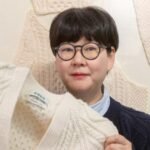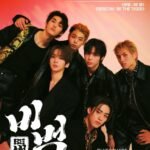Door-installed curtain airbag for PBV (Courtesy of Hyundai Mobis)
Hyundai Mobis Co., the world’s sixth-largest auto parts maker, on Thursday unveiled the industry’s first airbags for purpose-built vehicles (PBVs) as its affiliates — Hyundai Motor Co. and Kia Corp. – aim to make a foray into the market of personalized cars for various uses.
The leading South Korean automaker Hyundai Motor Group’s unit introduced a door-installed curtain airbag, which deploys from the bottom to the top, and a self-supporting passenger airbag, which absorbs impact solely through the support from the lower part of the inflatable cushion.
“These safety technologies consider the unique characteristics of PBVs, which typically have a spacious interior and versatile design options,” Hyundai Mobis said in a statement. “With the anticipated commercialization of PBV-based fleet services starting next year, the demand for passenger safety technologies in this sector is expected to increase.”
The company plans to develop various airbags for PBVs, which need dedicated inflatable cushions as the tailored vehicles can be manufactured in various forms such as passenger cars, trucks and taxis depending on what is placed on electric vehicle platforms.
The global PBV industry was forecast to soar to 20 million units by 2030 from the expected 1.3 million units next year, according to Hyundai Motor Group, the world’s third-largest automaker.
Kia, the group’s smaller carmaker leading the group’s PBV projects, plans to mass-produce the mid-sized PV5 next year and launch other models such as the PV1 and the PV7. Its larger affiliate Hyundai Motor Co. unveiled an electric commercial vehicle platform ST1 in March.
Comparison between an existing airbag for front passengers (left) and a self-supporting passenger airbag for PBVs (Courtesy of Hyundai Mobis)
MEETS SAFETY REQUIREMENTS
The PBV airbags met safety requirements in developed automobile markets such as North America, Hyundai Mobis said.
The door-installed curtain model inflates vertically from bottom to top within 0.03 seconds during an accident, according to the company. The airbag with a wire mechanism to prevent passengers from ejection satisfied the US National Highway Traffic Safety Administration’s (NHTSA) requirements for ejection mitigation systems, Hyundai Mobis said.
The airbag will be effective for PBVs as they often use sliding doors for rear passenger access, which might limit the space for airbag installation due to the door structure located on the ceiling, the company added.
The self-supporting passenger airbag for front-seat passengers overcomes the structural challenges of PBVs by absorbing impact using only the support from the lower part of the cushion, Hyundai Mobis said.
Sedans or sport utility vehicles (SUVs) use a windshield angled at about 30 degrees to support airbags, while PBVs are likely to have nearly vertical windshields.
Hyundai Mobis applied technology that secures the airbag cushion close to the front crash pad, ensuring stable passenger protection even without contact with the windshield. This design met the safety requirements set by the NHTSA’s New Car Assessment Program (NCAP), the company said.
By Jin-Won Kim
jin1@hankyung.com
Jongwoo Cheon edited this article.















